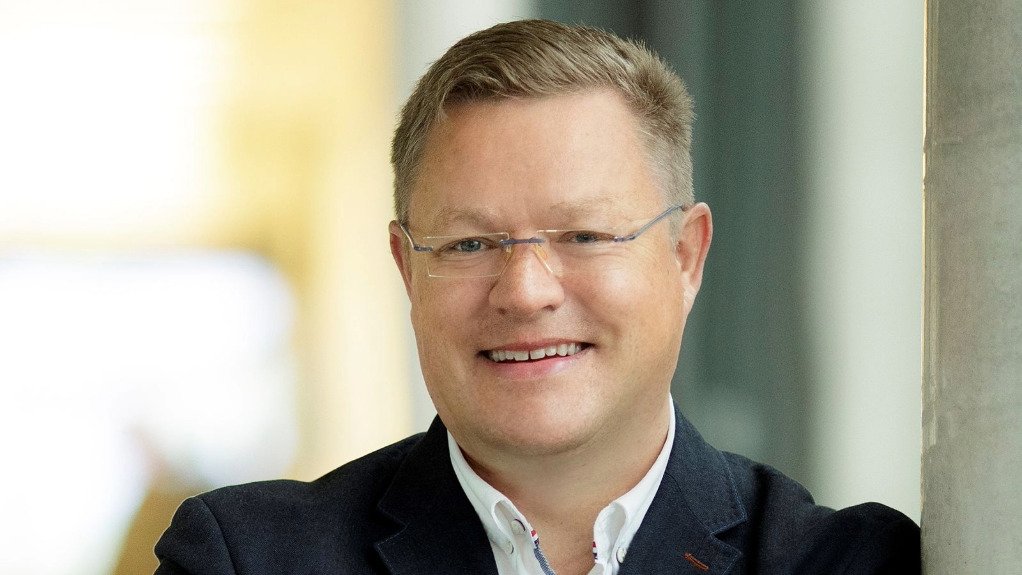Don’t conflate Eskom-Sasol bilateral on LNG with ‘national strategy’ needed to avert gas cliff – IGUA-SA


Industrial Gas Users Association of Southern Africa executive officer Jaco Human
The Industrial Gas Users Association of Southern Africa (IGUA-SA) has welcomed the attention that South Africa’s impending “gas cliff” is finally enjoying from government through Electricity and Energy Minister Dr Kgosientsho Ramokgopa.
The body is cautioning, however, against conflating the recent signing of an agreement between Eskom and Sasol to jointly explore ways to shore-up demand to facilitate the importation of liquefied natural gas (LNG), which Ramokgopa attended, with the “national strategy” or “country plan” required to avert the crisis.
This, because neither entity could adequately represent the industrial-consumption block that would play a central role in meeting the country’s LNG demand, nor the coordinated an inclusive LNG solution that reflected the collective interests of all stakeholders.
Eskom and Sasol have indicated that they will be jointly researching possible demand anchors in addition to existing industrial demand in Gauteng and KwaZulu-Natal, including gas-to-power (GtP) projects in close proximity to the existing Rompco pipeline from the Pande and Temane fields, in southern Mozambique, to Secunda, via Maputo.
Executive officer Jaco Human told Engineering News that IGUA-SA’s recent interaction with Ramokgopa pointed to the fact that government had fully grasped the urgency of the gas cliff, which had been largely ignored over the past ten years despite ongoing pleas and warnings from industrial consumers.
He said he was also encouraged by the Minister’s desire to address the issue as quickly as possible, given that Sasol had now officially extended the gas-supply plateau from its fields in Mozambique by a year to mid-2027.
IGUA-SA was now eagerly awaiting the outcome of efforts by Sasol to extend the plateau further to mid-2028; an extension that Human said was necessary to ensure that there was sufficient time to finalise the contracts and infrastructure developments needed to begin importing LNG through Maputo by late 2027 or early 2028.
He was more cautious, however, in his support for the bilateral memorandum of understanding between Eskom and Sasol, indicating that IGUA-SA would have preferred a multilateral gas-aggregation effort aimed at consolidating the fragmented market to enable secure, long-term gas infrastructure development and supply in order to find a “optimal solution” in the interest of the future users of LNG.
Yearly industrial demand of about 60 PJ was currently the main existing anchor for LNG imports, given that Sasol’s own demand would be limited in future to about 30 PJ to produce electricity, owing to the group’s assessment that it was not commercially viable to use LNG to manufacture fuels and chemicals in Sasolburg and Secunda.
The other demand “buckets” would arise from government’s independent power producer GtP procurement programmes and from Eskom, which had plans to build a 3 GW GtP power station in Richards Bay.
Human did not discount the prospect of Sasol emerging with a value-adding proposition for gas consumers in future.
He argued, however, that such a commercial offering would be distinct from the aggregation that industrial consumers envisaged, which would be developed on a cost-pass-through basis rather than one underpinned by the profit motive.
In the absence of any alternative market offering, IGUA-SA was pressing ahead with the formation of what it had dubbed ‘GasCo’, an “inclusive platform” in which government, international oil companies, gas suppliers and transporters, financial institutions and Sasol could all participate.
“We look forward to Sasol making its offer to gas consumers,” Human said, indicating that no such offer for LNG had been made to date.
He stressed, however, that industry would not be supportive of any future market structure that sought to reinforce the dominance of a single company.
“It is precisely such a structure that has led us to the current crisis and we will, thus, not support any move aimed at perpetuating Sasol’s market dominance at the expense of the development of a competitive gas market in South Africa” Human told Engineering News.
Instead, he looked forward to ongoing engagements with Ramokgopa and other stakeholders, including Eskom and Sasol, to find an enduring solution to the looming gas cliff.
Article Enquiry
Email Article
Save Article
Feedback
To advertise email advertising@creamermedia.co.za or click here
Comments
Press Office
Announcements
What's On
Subscribe to improve your user experience...
Option 1 (equivalent of R125 a month):
Receive a weekly copy of Creamer Media's Engineering News & Mining Weekly magazine
(print copy for those in South Africa and e-magazine for those outside of South Africa)
Receive daily email newsletters
Access to full search results
Access archive of magazine back copies
Access to Projects in Progress
Access to ONE Research Report of your choice in PDF format
Option 2 (equivalent of R375 a month):
All benefits from Option 1
PLUS
Access to Creamer Media's Research Channel Africa for ALL Research Reports, in PDF format, on various industrial and mining sectors
including Electricity; Water; Energy Transition; Hydrogen; Roads, Rail and Ports; Coal; Gold; Platinum; Battery Metals; etc.
Already a subscriber?
Forgotten your password?
Receive weekly copy of Creamer Media's Engineering News & Mining Weekly magazine (print copy for those in South Africa and e-magazine for those outside of South Africa)
➕
Recieve daily email newsletters
➕
Access to full search results
➕
Access archive of magazine back copies
➕
Access to Projects in Progress
➕
Access to ONE Research Report of your choice in PDF format
RESEARCH CHANNEL AFRICA
R4500 (equivalent of R375 a month)
SUBSCRIBEAll benefits from Option 1
➕
Access to Creamer Media's Research Channel Africa for ALL Research Reports on various industrial and mining sectors, in PDF format, including on:
Electricity
➕
Water
➕
Energy Transition
➕
Hydrogen
➕
Roads, Rail and Ports
➕
Coal
➕
Gold
➕
Platinum
➕
Battery Metals
➕
etc.
Receive all benefits from Option 1 or Option 2 delivered to numerous people at your company
➕
Multiple User names and Passwords for simultaneous log-ins
➕
Intranet integration access to all in your organisation



















